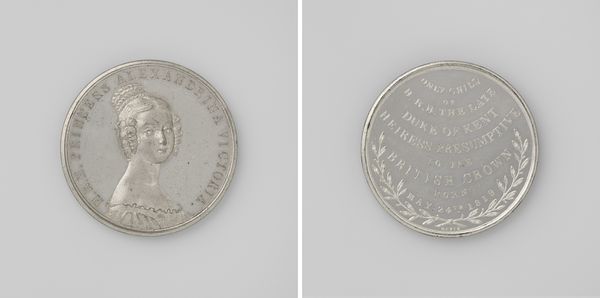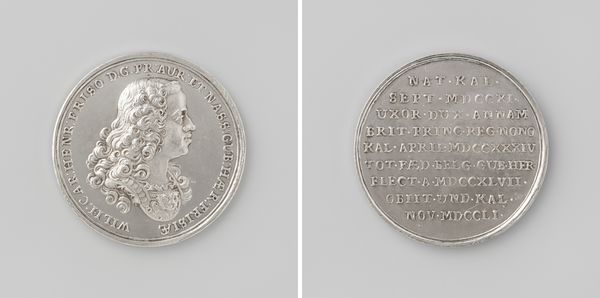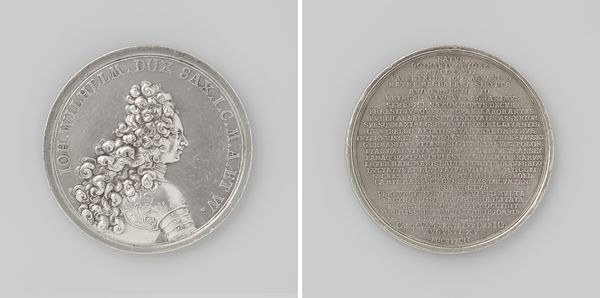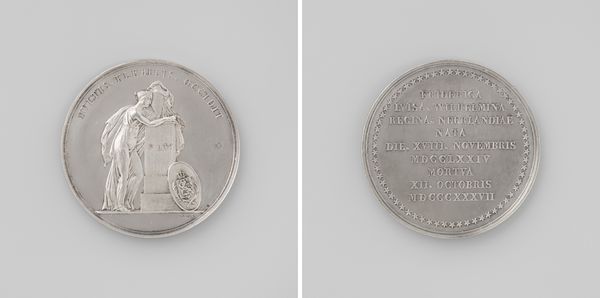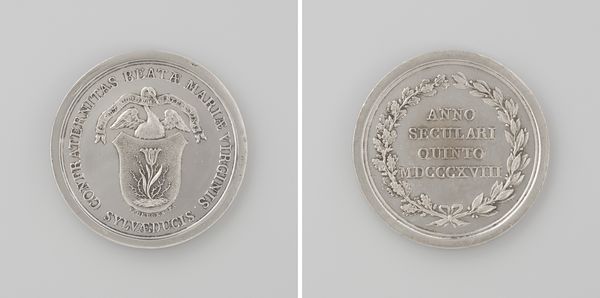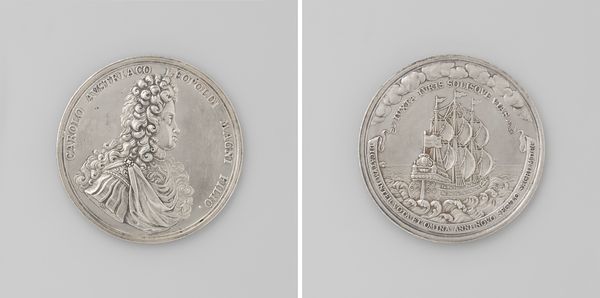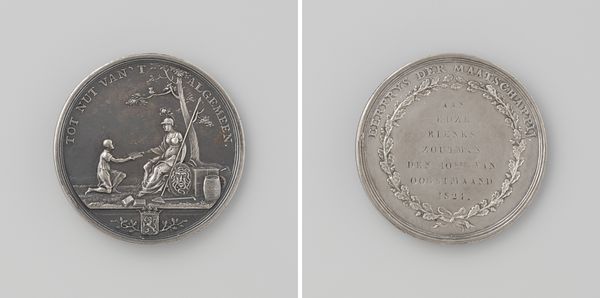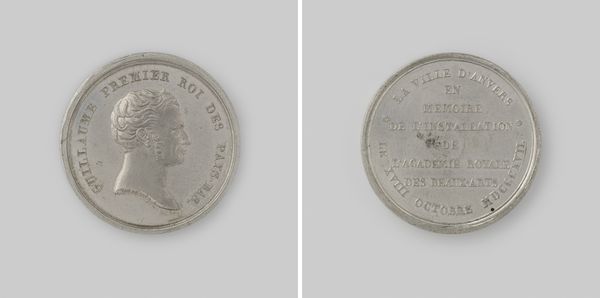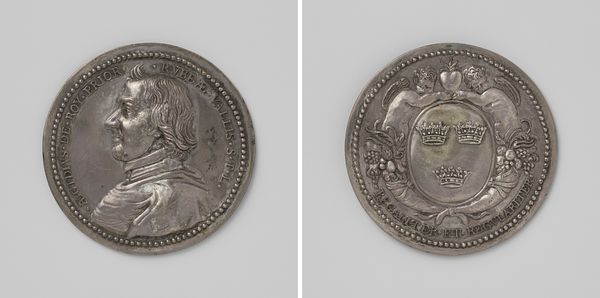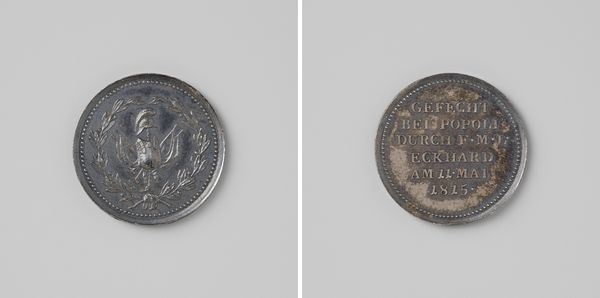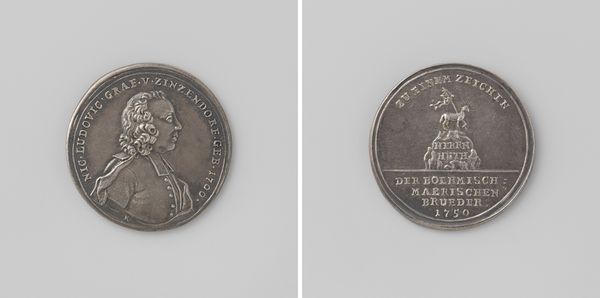
Oprichting van een standbeeld voor de schilder Pieter Paul Rubens te Antwerpen, penning geslagen op last van de Societe Royale des Sciences, Lettres et Arts te Antwerpen 1840
0:00
0:00
metal, relief, sculpture, engraving
#
portrait
#
metal
#
relief
#
sculpture
#
history-painting
#
engraving
Dimensions: diameter 4.5 cm, weight 37.59 gr
Copyright: Rijks Museum: Open Domain
Editor: This metal medal, "Oprichting van een standbeeld voor de schilder Pieter Paul Rubens te Antwerpen," commemorating the erection of a statue of Rubens in Antwerp, was commissioned in 1840. It feels quite formal and official. What strikes you about this piece? Curator: I'm drawn to how it signifies a conscious effort of historical myth-making and the social construction of artistic genius. What does it mean for Antwerp, as a city, to commemorate Rubens in this way, nearly two centuries after his death? Editor: I suppose it’s about celebrating a national hero and solidifying a particular cultural narrative. But why a medal? Curator: Exactly. Medals often function as objects of power, symbols of commemoration, and even tools for shaping public opinion. Think about who commissioned it: the Société Royale des Sciences, Lettres et Arts. That's a formal endorsement, almost a claim to Rubens as a cultural icon that the Antwerp Royal Society is very proud of. Editor: So, this isn’t just about art; it’s about cultural capital. It really prompts questions around cultural identity. Did later artistic movements react to that monument in the same celebratory way? Curator: Precisely. It becomes important to examine how later generations engaged with this carefully constructed image of Rubens. Do they uphold the same values? Do they challenge it? This medal becomes a lens through which we can examine the evolving social and political contexts. Editor: It is amazing to think a simple medal could tell such a nuanced story of culture and ideology! Curator: Absolutely! And by recognizing this, we encourage a richer understanding of history beyond simplistic celebrations.
Comments
No comments
Be the first to comment and join the conversation on the ultimate creative platform.
